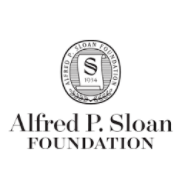We are excited to announce that the Alfred P. Sloan Foundation’s Microbiology of the Built Environment (MoBE) program is offering up to 5 travel awards of up to $1,500 each to cover registration, accommodation, and/or travel for graduate students, postdoctoral fellows, or Assistant Professors who are submitting Extended Abstracts or Full Papers to INDOOR AIR …
This is just a quick posting of some building science data that I collected during Day 1 of the 4th Annual Conference on the Microbiology of the Built Environment in Boulder, CO. I setup a couple of our Open Source Building Science Sensors (OSBSS) in the front corner of the room before the conference convened yesterday and left …
I saw the tweet below from James Scott first thing this morning, linking to a NY Times article about the tragic balcony collapse in Berkeley, CA two days ago: Fungi to blame for fatal Berkeley balcony collapse, via @nytimes http://t.co/MLWX24x4Z1 – James Scott (@jscott_toronto) June 18, 2015 From the article: The engineers said photographs taken by …
Just a quick plug: Jack Gilbert and I are guest-editing a special issue in Microbiome dedicated to Microbiology of the Built Environment. We are now accepting original research, methods, and software article submissions to be considered for the special issue (planned for publication in late 2015). We are looking specifically for work that involves multiple aspects of the …
Back in October 2013 I wrote a blog post here called “Building science measurements in the Hospital Microbiome Project: Part 1” where I described the types of building environmental and operational measurements we were making at the time as part of Jack Gilbert’s Sloan-funded Hospital Microbiome Project (Jeff Siegel at the University of Toronto also played a …
This is just a quick post to introduce some early work products resulting from a really exciting project my team has been working on: the Open Source Building Science Sensors (OSBSS) Project (funded by the Sloan Foundation). The goal of OSBSS is to to design and develop a network of inexpensive, open source devices based on …
While recent studies of the microbiology of the built environment (MoBE) have greatly increased our understanding of microbial community structure and composition on surfaces and in air within the spaces in which we live and work, most have been driven and led primarily by microbiologists with the building science community playing a supporting role. Perhaps as …
Rachel Adams touched on this topic in a post last year, Size matters, or what I learned collaborating with environmental engineers, so I thought I’d revisit it. In her original post, Rachel described that she had been working on methods for air sampling for microbes and when she ran some ideas past her environmental engineering …
I was recently encouraged to post this video I made with a couple of classmates while I was in graduate school at the University of Texas at Austin (the other “actors” are Laura Reed, now a PhD student in water resources at Tufts University, and Sarah Taylor Lange, who just finished her PhD in concrete …
First of all, Happy Halloween everyone. I think my costume this year will be a blogger! For those that don’t know me, I’m Brent Stephens, an assistant professor in the Department of Civil, Architectural and Environmental Engineering at Illinois Institute of Technology in Chicago, IL. I call my research team the Built Environment Research Group …
